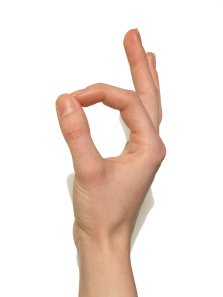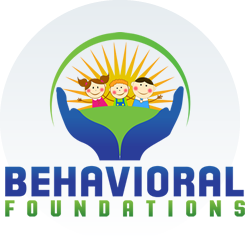 One aspect of ABA therapy often involves teaching your child a functional replacement behavior for inappropriate behaviors like hitting, yelling, etc. A functional replacement behavior basically means that we find an appropriate behavior that can replace the ones we don’t want that, most importantly, achieve the same result.
One aspect of ABA therapy often involves teaching your child a functional replacement behavior for inappropriate behaviors like hitting, yelling, etc. A functional replacement behavior basically means that we find an appropriate behavior that can replace the ones we don’t want that, most importantly, achieve the same result.
So we find out what the child wants and how they typically get it, and teach them a new way to get the same outcome in a good way. A great teaching tool for this type of goal is using DO language.
What is DO language?
DO language refers to how you phrase your instructions and requests. Instead of telling your child what not to do, try telling them specifically what you want them to do.
Example: Scott is hitting his sister because she has his favorite toy. Instead of saying “Scott don’t hit your sister”, try saying “Scott hold your hand out”.
This gives Scott appropriate behavior for asking for a toy rather than hitting.
You might even go a step further and demonstrate exactly how you want him/her to perform the correct behavior using your DO language.
Example: Tommy is playing very rough with his toy cars and crashing them into things causing damage. Instead of saying “Tommy don’t do that” or “Tommy stop being rough with your cars” try saying “Tommy let’s roll our cars” and take a car to show him how to roll it nicely.
Why is DO language important?
Imagine you are in a new place where you know very little about your surroundings, you will probably look around and may even try out things like buttons, switches and doors to see what they do. This is, in a sense, how children view the world. They are simply learning what the outcomes of certain actions are.
Children hear “don’t”, “no”, “stop”, and “get away from that” many times a day. But, rarely do they hear what they can do. DO language seeks to teach the child what their options are instead of just telling them what is off limits. While we want children to learn what is not appropriate, they must also learn what IS appropriate if they are to succeed. Using DO language is just one tool for helping children learn these rules.
How can I use DO language?
An important part of any child’s treatment is family support. In order to best help your child, get involved and learn the techniques your therapist uses for working with them. Ask your therapist or BCBA to identify simple and direct DO phrases and try them at home when working with your child. If you catch yourself saying words like “don’t”, “no”, “stop” etc, stop and think about how you can turn your phrase into a DO phrase.

 INSURANCE ACCEPTED!
INSURANCE ACCEPTED!